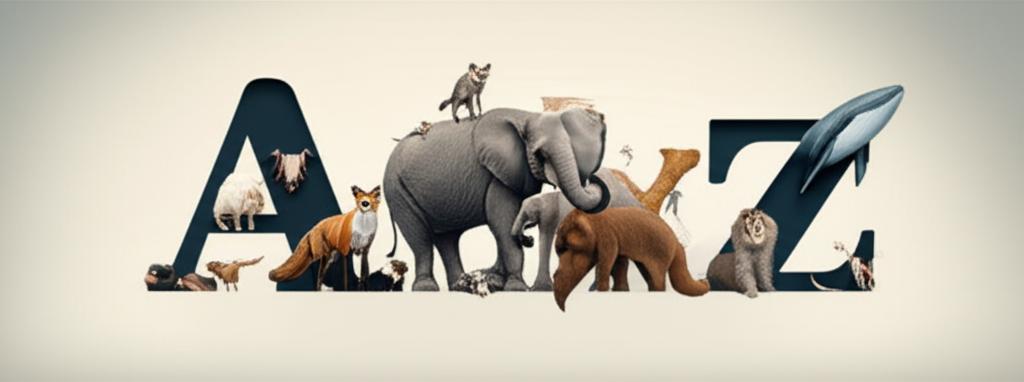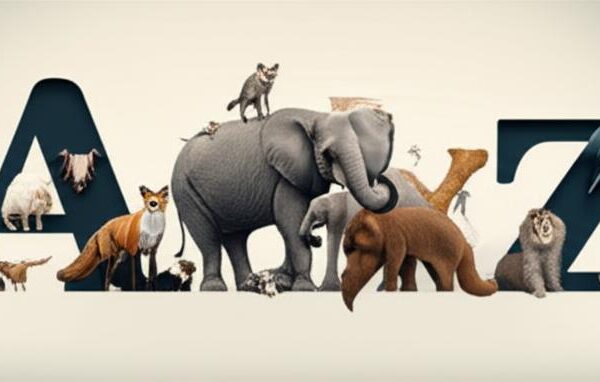This list includes 83 Mammals that start with S, from “Sable” to “Sydneyside Dasyure”. It covers global species, from widespread squirrels and seals to rare, regionally endemic marsupials.
Mammals that start with S are species in Class Mammalia whose common English names begin with S. Notable examples include the sable, prized historically for its fur, and seals familiar across many coastal cultures.
Below you’ll find the table with Common name, Scientific name, Order and Habitat.
Common name: The widely used English name for the species, helping you quickly recognize and search for animals.
Scientific name: The accepted Latin binomial lets you confirm species identity across languages and scientific lists.
Order: Shows the taxonomic order, so you understand broader evolutionary groups and compare related species.
Habitat: A concise habitat tag (forest, marine, desert, urban, etc.) that helps you filter species by environment.
Mammals that start with S
| Common name | Scientific name | Order | Habitat |
|---|---|---|---|
| Sable | Martes zibellina | Carnivora | Boreal forest, taiga |
| Saiga | Saiga tatarica | Artiodactyla | Steppe, semi-desert, grassland |
| Saki | Pithecia pithecia | Primates | Tropical rainforest |
| Salt-marsh Harvest Mouse | Reithrodontomys raviventris | Rodentia | Coastal salt marsh, wetlands |
| Sand Cat | Felis margarita | Carnivora | Sandy and stony desert |
| Saola | Pseudoryx nghetinhensis | Artiodactyla | Montane evergreen forest |
| Savi’s Pygmy Shrew | Suncus etruscus | Eulipotyphla | Scrubland, grassland, forest |
| Schreiber’s Long-fingered Bat | Miniopterus schreibersii | Chiroptera | Caves, forests, scrubland |
| Scimitar-horned Oryx | Oryx dammah | Artiodactyla | Desert, arid steppe |
| Sea Lion | Zalophus californianus | Carnivora | Marine, coastal |
| Sea Otter | Enhydra lutris | Carnivora | Marine, kelp forests, coastal |
| Sei Whale | Balaenoptera borealis | Cetacea | Marine, oceanic |
| Sengi | Rhynchocyon petersi | Macroscelidea | Forest, thicket |
| Serval | Leptailurus serval | Carnivora | Savanna, wetlands |
| Sheep | Ovis aries | Artiodactyla | Grassland, montane, agricultural |
| Sherman’s Fox Squirrel | Sciurus niger shermani | Rodentia | Pine forest, woodlands |
| Short-beaked Common Dolphin | Delphinus delphis | Cetacea | Marine, oceanic, coastal |
| Short-finned Pilot Whale | Globicephala macrorhynchus | Cetacea | Marine, deep oceanic |
| Short-tailed Weasel | Mustela erminea | Carnivora | Forest, tundra, grassland |
| Shrew-faced Ground Squirrel | Rhinosciurus laticaudatus | Rodentia | Tropical rainforest floor |
| Siamang | Symphalangus syndactylus | Primates | Tropical rainforest |
| Siberian Chipmunk | Eutamias sibiricus | Rodentia | Forest, scrubland, urban parks |
| Siberian Flying Squirrel | Pteromys volans | Rodentia | Boreal forest, taiga |
| Siberian Weasel | Mustela sibirica | Carnivora | Forest, farmland, wetlands |
| Sifaka | Propithecus coquereli | Primates | Dry deciduous forest |
| Sika Deer | Cervus nippon | Artiodactyla | Temperate and subtropical forest |
| Silver-backed Chevrotain | Tragulus versicolor | Artiodactyla | Coastal dry forest |
| Silvered Langur | Trachypithecus cristatus | Primates | Coastal and mangrove forest |
| Sitatunga | Tragelaphus spekii | Artiodactyla | Swamps, marshland, wetlands |
| Slender Loris | Loris tardigradus | Primates | Tropical rainforest, scrub forest |
| Sloth Bear | Melursus ursinus | Carnivora | Forest, scrubland, grassland |
| Small-toothed Ferret-badger | Melogale moschata | Carnivora | Tropical forest, grassland |
| Smoky Bat | Amorphochilus schnablii | Chiroptera | Arid coastal regions, caves |
| Smooth-coated Otter | Lutrogale perspicillata | Carnivora | Freshwater wetlands, rivers, lakes |
| Snub-nosed Monkey | Rhinopithecus roxellana | Primates | Montane temperate forest |
| Snow Leopard | Panthera uncia | Carnivora | Montane, alpine, rocky terrain |
| Snow Sheep | Ovis nivicola | Artiodactyla | Montane, alpine tundra |
| Snowshoe Hare | Lepus americanus | Lagomorpha | Boreal forest, montane forest |
| Solenodon | Solenodon paradoxus | Eulipotyphla | Forest, scrubland |
| Somali Wild Ass | Equus asinus somaliensis | Perissodactyla | Desert, semi-desert scrubland |
| South American Fur Seal | Arctocephalus australis | Carnivora | Marine, rocky coasts |
| Southern Bog Lemming | Synaptomys cooperi | Rodentia | Bogs, wet meadows, tundra |
| Southern Flying Squirrel | Glaucomys volans | Rodentia | Deciduous and mixed forest |
| Southern Giraffe | Giraffa giraffa | Artiodactyla | Savanna, woodlands |
| Southern Marsupial Mole | Notoryctes typhlops | Notoryctemorphia | Sandy desert, dunes |
| Southern Right Whale | Eubalaena australis | Cetacea | Marine, polar to temperate waters |
| Southern Right Whale Dolphin | Lissodelphis peronii | Cetacea | Marine, cold oceanic waters |
| Southern Tamandua | Tamandua tetradactyla | Pilosa | Forest, savanna, scrubland |
| Sowerby’s Beaked Whale | Mesoplodon bidens | Cetacea | Marine, deep offshore waters |
| Spanish Ibex | Capra pyrenaica | Artiodactyla | Montane, rocky slopes |
| Spectacled Bear | Tremarctos ornatus | Carnivora | Andean cloud forest, montane |
| Spectacled Flying Fox | Pteropus conspicillatus | Chiroptera | Tropical rainforest, mangrove |
| Spectacled Porpoise | Phocoena dioptrica | Cetacea | Marine, cold sub-Antarctic waters |
| Sperm Whale | Physeter macrocephalus | Cetacea | Marine, deep oceanic waters |
| Spider Monkey | Ateles geoffroyi | Primates | Tropical rainforest |
| Spiny Mouse | Acomys cahirinus | Rodentia | Rocky desert, arid savanna |
| Spix’s Disk-winged Bat | Thyroptera tricolor | Chiroptera | Tropical lowland forest |
| Spotted Deer | Axis axis | Artiodactyla | Forest, grassland, scrubland |
| Spotted-necked Otter | Hydrictis maculicollis | Carnivora | Freshwater lakes and rivers |
| Spotted Seal | Phoca largha | Carnivora | Marine, arctic and subarctic ice |
| Springbok | Antidorcas marsupialis | Artiodactyla | Arid plains, savanna, desert |
| Springhare | Pedetes capensis | Rodentia | Semi-arid grassland, scrubland |
| Squirrel Glider | Petaurus norfolcensis | Diprotodontia | Eucalypt forest, woodlands |
| Squirrel Monkey | Saimiri sciureus | Primates | Tropical rainforest |
| Steenbok | Raphicerus campestris | Artiodactyla | Savanna, open woodland |
| Steller’s Sea Cow | Hydrodamalis gigas | Sirenia | Marine, shallow coastal waters |
| Steller Sea Lion | Eumetopias jubatus | Carnivora | Marine, subarctic coastal |
| Stoat | Mustela erminea | Carnivora | Temperate and boreal forest |
| Strait of Magellan Tuco-tuco | Ctenomys magellanicus | Rodentia | Grassland, steppe |
| Striped Dolphin | Stenella coeruleoalba | Cetacea | Marine, temperate and tropical seas |
| Striped Hyena | Hyaena hyaena | Carnivora | Dry woodland, scrubland, savanna |
| Striped Polecat | Ictonyx striatus | Carnivora | Grassland, savanna, woodland |
| Striped Skunk | Mephitis mephitis | Carnivora | Woodland, grassland, urban |
| Sugar Glider | Petaurus breviceps | Diprotodontia | Forest, woodland |
| Sunda Colugo | Galeopterus variegatus | Dermoptera | Tropical rainforest |
| Sunda Clouded Leopard | Neofelis diardi | Carnivora | Tropical rainforest |
| Sunda Pangolin | Manis javanica | Pholidota | Forest, plantations |
| Suni | Neotragus moschatus | Artiodactyla | Thicket, dry forest |
| Swamp Rabbit | Sylvilagus aquaticus | Lagomorpha | Bottomland forest, swamps, wetlands |
| Swamp Wallaby | Wallabia bicolor | Diprotodontia | Forest, woodland, heath |
| Swinhoe’s Striped Squirrel | Tamiops swinhoei | Rodentia | Subtropical montane forest |
| Sword-nosed Bat | Lonchorhina aurita | Chiroptera | Tropical forest, caves |
| Sydneyside Dasyure | Dasyurus geoffroii | Dasyuromorphia | Dry forest, woodland, mallee |
Descriptions
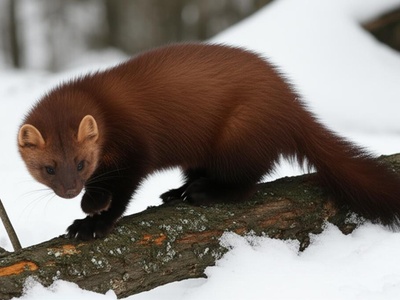
Sable
A forest-dwelling marten from Siberia and northern Asia, famed for its luxurious, dark fur. It is a nimble hunter, feeding on small animals and pine nuts.
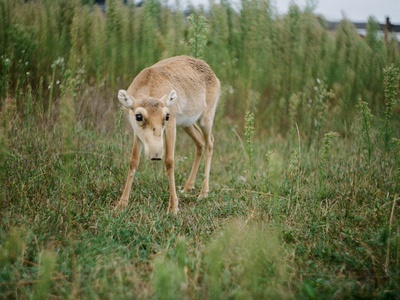
Saiga
A critically endangered antelope of the Eurasian steppe, easily recognized by its unique, large, and inflatable nose that warms cold winter air.
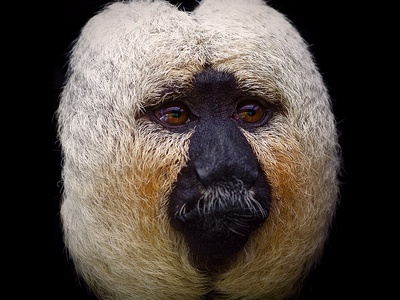
Saki
A New World monkey from South America with a distinctive bushy, non-prehensile tail. Males are black with a white face, while females are brownish-grey.
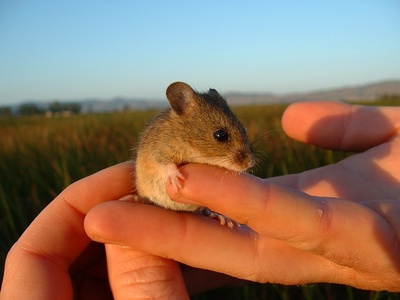
Salt-marsh Harvest Mouse
A tiny, endangered rodent found only in the salt marshes of the San Francisco Bay Area. It is adapted to survive in tidal habitats by drinking salt water.
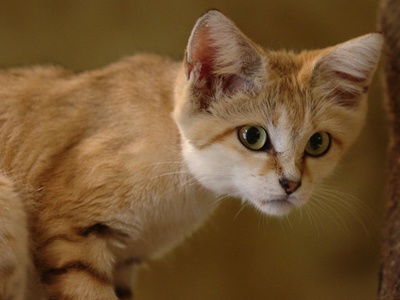
Sand Cat
A small wild cat native to deserts in North Africa and Asia. It has broad, furred paws that protect it from hot sand and is exceptionally skilled at digging.
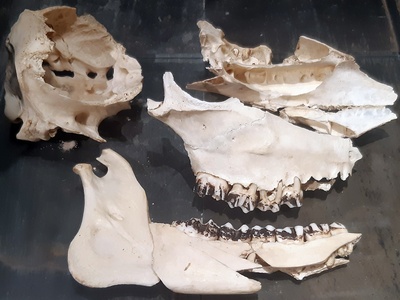
Saola
One of the world’s rarest large mammals, often called the “Asian unicorn.” It lives in the Annamite Mountains of Vietnam and Laos and was only discovered in 1992.

Savi’s Pygmy Shrew
Possibly the world’s smallest mammal by mass, weighing only about 2 grams. Found in Southern Europe and North Africa, it has an incredibly fast metabolism.
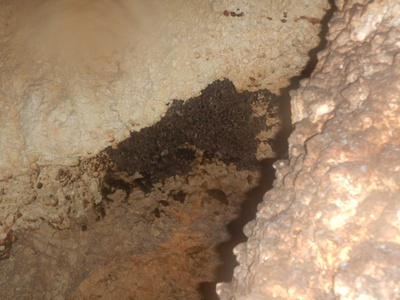
Schreiber’s Long-fingered Bat
A widespread species of bat found across Europe, Asia, Africa, and Australia. It is known for its long third finger and forming massive colonies in caves.

Scimitar-horned Oryx
An antelope with long, curved horns, once widespread across North Africa. It was declared extinct in the wild but is now being successfully reintroduced.
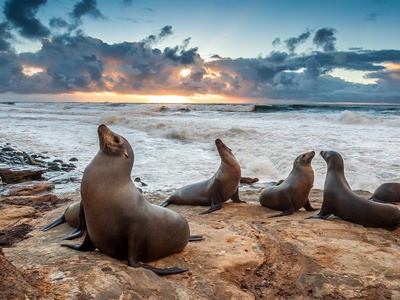
Sea Lion
The California Sea Lion is known for its intelligence, playfulness, and loud barking. It is commonly seen on the Pacific coast of North America in coastal waters and on beaches.
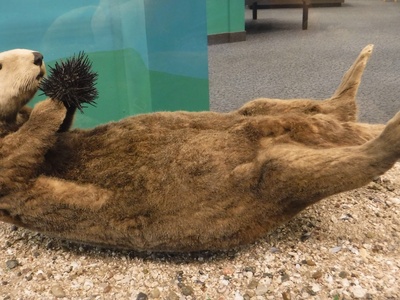
Sea Otter
The smallest marine mammal, inhabiting the northern Pacific coast. It is famous for using rocks to crack open shellfish and having the densest fur in the animal kingdom.

Sei Whale
One of the fastest baleen whales, capable of reaching speeds over 50 km/h. This endangered whale is found in oceans worldwide, migrating between polar and subtropical waters.

Sengi
Also known as the Black and Rufous Elephant Shrew, this small mammal from East Africa has a long, flexible snout for probing for insects. It is more closely related to elephants than shrews.
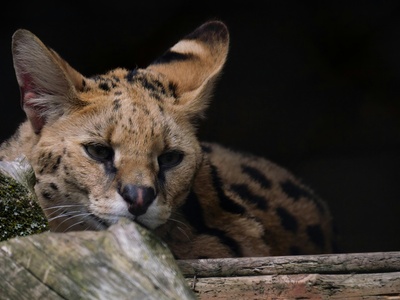
Serval
A slender, medium-sized wild cat from Africa, known for its exceptionally long legs and large ears. It uses its powerful hearing to locate prey in tall grass.

Sheep
The domestic sheep is one of the most common farm animals, raised for its wool, meat, and milk. Wild relatives like the Bighorn Sheep inhabit rugged mountain terrain.
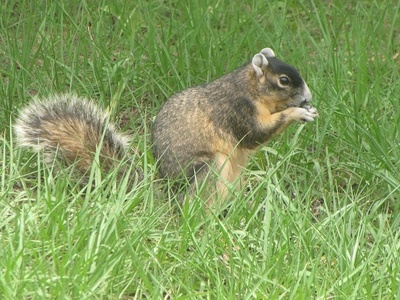
Sherman’s Fox Squirrel
A large, charismatic subspecies of fox squirrel found in the southeastern United States, particularly Florida. It is known for its variable coloration, often black with a white nose.
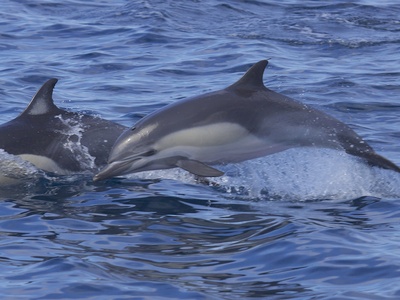
Short-beaked Common Dolphin
A highly social and acrobatic dolphin found in temperate and tropical waters worldwide. They often travel in large pods and are known for bow-riding on ships’ wakes.

Short-finned Pilot Whale
A large species of oceanic dolphin with a bulbous head. They are highly social, living in tight-knit family groups and found in warm waters around the globe.

Short-tailed Weasel
Also known as the stoat or ermine, this small carnivore is found across the Northern Hemisphere. Its coat famously turns white in winter for camouflage in the snow.
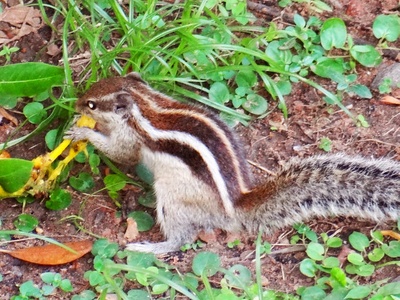
Shrew-faced Ground Squirrel
A unique squirrel from Southeast Asia with a very long snout, resembling a shrew. It primarily forages on the forest floor for insects and earthworms rather than nuts.
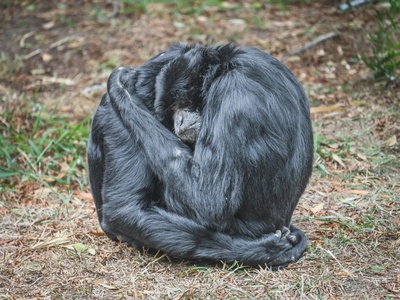
Siamang
The largest of the gibbons, native to forests in Malaysia, Thailand, and Sumatra. It is known for its loud, booming calls produced by an inflatable throat sac.
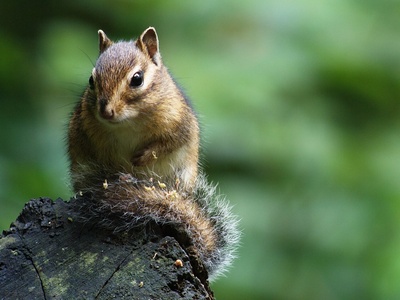
Siberian Chipmunk
The only chipmunk species found outside of North America. It is native to northern Asia but has also been introduced to parts of Europe, where it is sometimes kept as a pet.
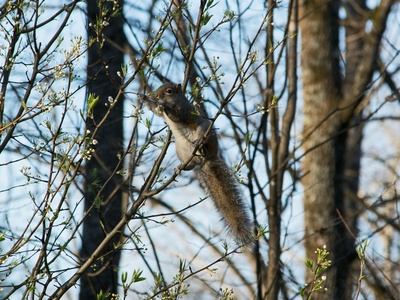
Siberian Flying Squirrel
A nocturnal squirrel that glides between trees using a furry membrane called a patagium. Found across northern Eurasia, it is the only flying squirrel species in Europe.

Siberian Weasel
A medium-sized weasel found throughout Asia. Its fur, particularly from the tail, is famously used to make high-quality artists’ paintbrushes known as kolinsky sable.

Sifaka
Coquerel’s Sifaka is a lemur from Madagascar known for its unique, bipedal, sideways hopping on the ground. It has striking white fur with maroon patches.
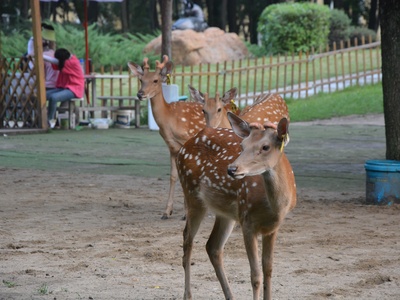
Sika Deer
A deer native to East Asia, now widely introduced elsewhere. Sika deer are known for their vocalizations, which include high-pitched whistles and screams.
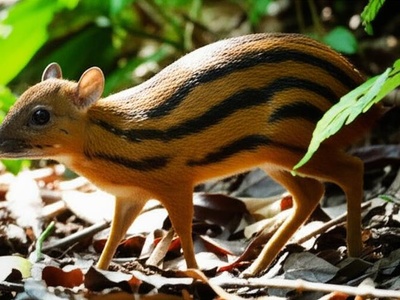
Silver-backed Chevrotain
A tiny, deer-like hoofed mammal from Vietnam, also known as the mouse-deer. It was thought to be extinct for nearly 30 years before being rediscovered in 2019.

Silvered Langur
A leaf-eating monkey from Southeast Asia. Adults have dark grey, silver-tipped fur, while infants are born with bright orange fur that changes color after a few months.
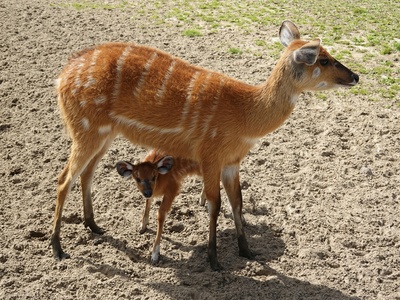
Sitatunga
A semi-aquatic antelope found in the dense wetlands of central Africa. It has long, splayed hooves that are adapted for walking on soft, marshy ground.

Slender Loris
A small, nocturnal primate from India and Sri Lanka with huge, forward-facing eyes for excellent night vision. It moves with slow, deliberate grace to avoid predators.
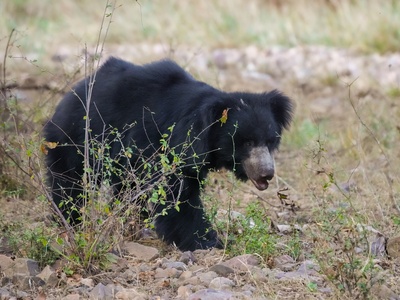
Sloth Bear
A nocturnal bear from the Indian subcontinent that primarily eats insects. It has a long, shaggy coat and specialized lips and palate for sucking up termites and ants.

Small-toothed Ferret-badger
A small, nocturnal carnivore found in Southeast Asia. It has a slender body and a long, bushy tail, and like other ferret-badgers, it can produce a potent scent.

Smoky Bat
A bat species found in arid coastal areas of Peru and Ecuador. It is named for its greyish, smoky-colored fur and is threatened by habitat disturbance.
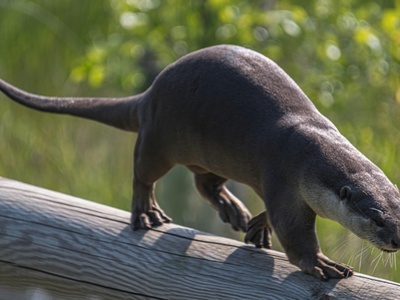
Smooth-coated Otter
A large otter species found in the Indian subcontinent and Southeast Asia. It lives in social groups and is known for its smooth, sleek coat and flattened tail.

Snub-nosed Monkey
The Golden Snub-nosed Monkey is an Old World monkey from central China. It has a unique, short, upturned nose and is adapted to living in snowy mountain forests.

Snow Leopard
A large, elusive cat native to the mountain ranges of Central and South Asia. Its smoky-grey, spotted coat provides perfect camouflage in its rocky habitat.
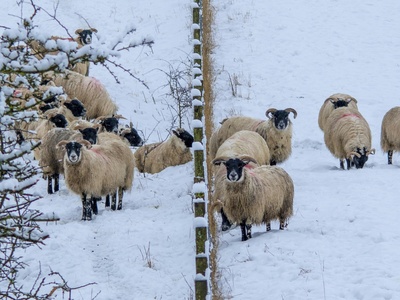
Snow Sheep
A wild sheep inhabiting the mountains of northeastern Siberia. It is well-adapted to extreme cold and rugged terrain, with a thick coat and strong hooves.
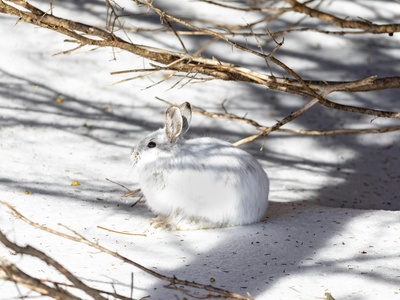
Snowshoe Hare
A hare found in North America named for its large hind feet that act like snowshoes, allowing it to travel over deep snow. Its fur turns from brown in summer to white in winter.
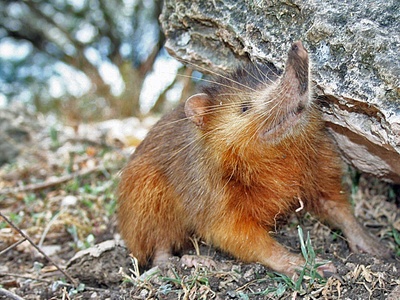
Solenodon
The Hispaniolan Solenodon is a rare, shrew-like mammal native to Hispaniola. It is one of the few venomous mammals, delivering toxic saliva through grooves in its incisors.

Somali Wild Ass
A critically endangered wild ass subspecies native to the Horn of Africa. It is a key ancestor of the domestic donkey and is distinguished by its striped legs.

South American Fur Seal
A fur seal that breeds on the coasts of Peru, Chile, Argentina, and Brazil. Unlike true seals, they can turn their rear flippers forward to walk on land.
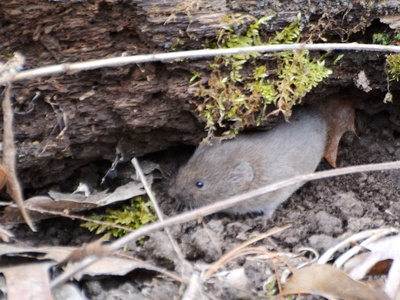
Southern Bog Lemming
A small, vole-like rodent from eastern North America. It lives in wet, grassy habitats, creating extensive runway systems under vegetation and snow.
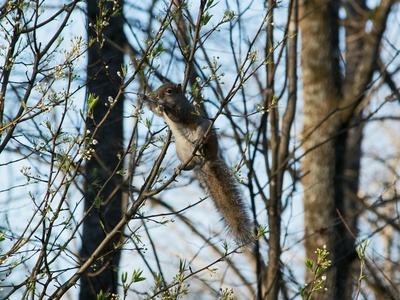
Southern Flying Squirrel
A nocturnal squirrel from North America that glides between trees using a skin membrane. It is highly social, often nesting in groups during winter for warmth.

Southern Giraffe
The most widespread of the four giraffe species, found across Southern and Eastern Africa. It is recognized by its large, blotchy patches with star-like extensions.

Southern Marsupial Mole
A bizarre, blind, and earless marsupial from the deserts of western Australia. It “swims” through sand and spends nearly its entire life underground.
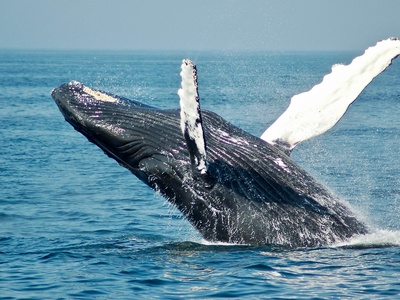
Southern Right Whale
A large baleen whale known for its callosities (rough skin patches) on its head and lack of a dorsal fin. They are slow swimmers and frequent coastal waters to breed.
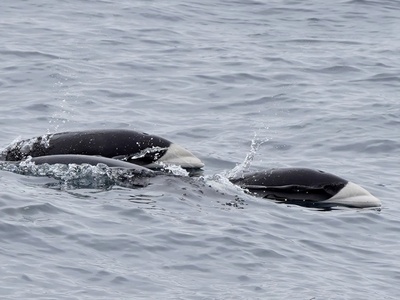
Southern Right Whale Dolphin
A slender, graceful dolphin of the Southern Ocean. It is unique for being one of only two dolphin species completely lacking a dorsal fin, giving it a sleek appearance.

Southern Tamandua
A species of anteater from South America, also called the collared anteater. It is semi-arboreal, using its prehensile tail as an extra limb when climbing.

Sowerby’s Beaked Whale
A mysterious, deep-diving whale from the North Atlantic Ocean. Like other beaked whales, it is rarely seen, and adult males are identified by a single pair of teeth that erupt from the jaw.

Spanish Ibex
A wild goat with large, curved horns found in the mountains of the Iberian Peninsula. It is an agile climber, well-suited to its steep, rocky habitat.
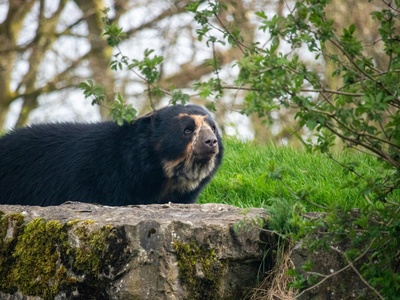
Spectacled Bear
South America’s only native bear species. It is named for the light-colored markings around its eyes that often resemble glasses. It is primarily herbivorous.

Spectacled Flying Fox
A large fruit bat from northeastern Australia and New Guinea. It gets its name from the straw-colored fur around its eyes, which contrasts with its black body.

Spectacled Porpoise
A rarely seen porpoise of the Southern Ocean, named for the distinct dark patches around its eyes. It has a striking black-and-white coloration.
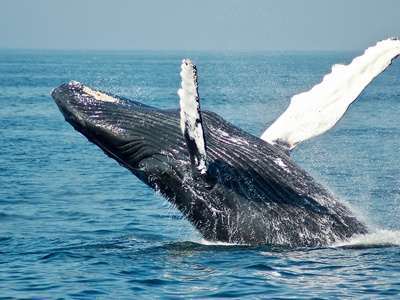
Sperm Whale
The largest of the toothed whales, famous for its massive head which contains spermaceti oil. It is a deep diver, hunting for giant squid in the ocean depths.

Spider Monkey
Geoffroy’s Spider Monkey is a large New World monkey from Central America known for its incredibly long limbs and prehensile tail, which it uses as a fifth limb.
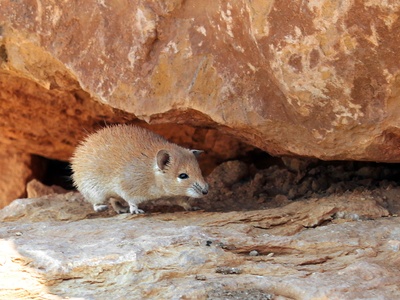
Spiny Mouse
The Cairo Spiny Mouse is known for its stiff, spiny guard hairs on its back. Remarkably, it is capable of regenerating damaged skin, fur, and even cartilage.

Spix’s Disk-winged Bat
A small bat from Central and South America with unique suction cups on its wrists and ankles. It uses these disks to roost inside smooth, unfurling leaves.
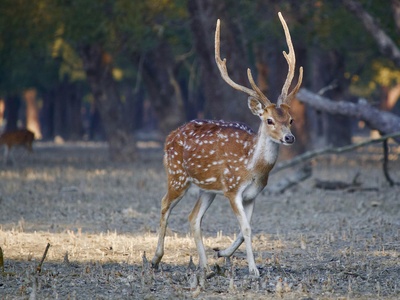
Spotted Deer
Also known as the chital, this deer is native to the Indian subcontinent. It is famous for its reddish-brown coat covered in white spots that it retains throughout its life.
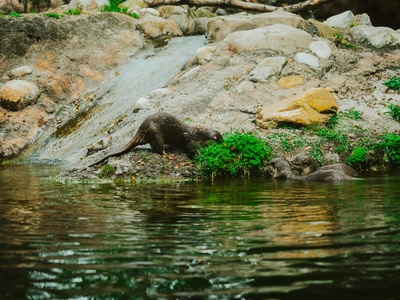
Spotted-necked Otter
An otter species from sub-Saharan Africa, recognized by the cream-colored splotches on its neck and chest. It is a social animal that primarily eats fish.

Spotted Seal
An ice seal of the North Pacific Ocean, closely related to the harbor seal. It relies on sea ice for breeding, pupping, and resting, making it vulnerable to climate change.

Springbok
A medium-sized antelope from southern Africa, known for its incredible leaping ability, called “pronking.” It is the national animal of South Africa.

Springhare
A nocturnal, kangaroo-like rodent from southern Africa. Despite its name and appearance, it is not a hare but belongs to its own unique family.
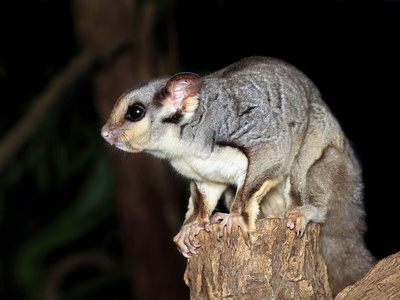
Squirrel Glider
A nocturnal Australian marsupial that can glide up to 50 meters between trees. It is larger than the related sugar glider and has a longer, bushier tail.
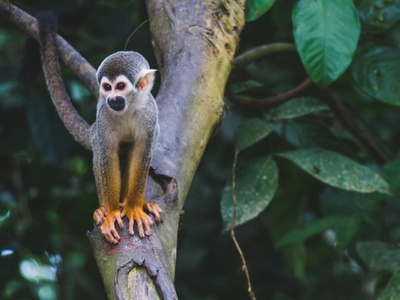
Squirrel Monkey
The Common Squirrel Monkey is a small, agile primate from South America. They live in large, multi-male, multi-female groups that can number up to 100 individuals.

Steenbok
A small, common antelope of southern and eastern Africa. When threatened, it often lies flat on the ground to hide rather than running away immediately.
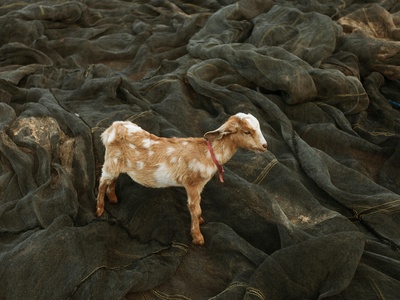
Steller’s Sea Cow
An extinct, massive sirenian that once lived in the Bering Sea. It grew up to 9 meters long and was hunted to extinction within 27 years of its discovery by Europeans.
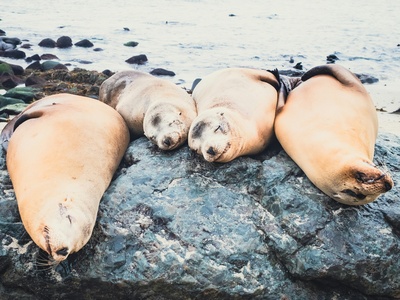
Steller Sea Lion
The largest species of sea lion, found in the cold coastal waters of the North Pacific. Adult males are massive, weighing up to 1,120 kg, and have a lion-like mane.
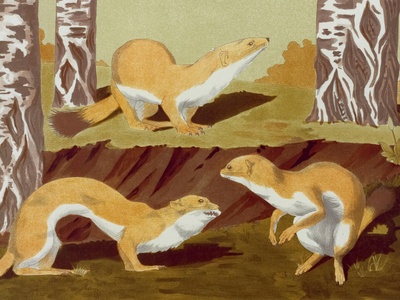
Stoat
A small, fierce predator known for its boundless energy. In winter, its coat turns pure white (except for a black tail tip) and is known as ermine.

Strait of Magellan Tuco-tuco
A burrowing rodent from southern Patagonia. Like other tuco-tucos, it is named for the “tuc-tuc” sound it makes while digging its complex tunnel systems.
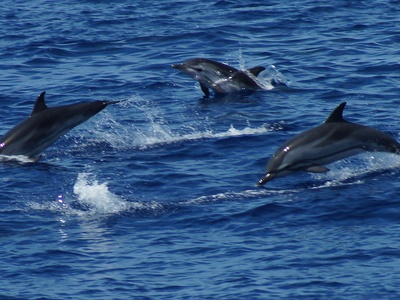
Striped Dolphin
A highly active and acrobatic dolphin found worldwide. It is named for the distinctive blue and white stripes that run from its eye down its flanks.
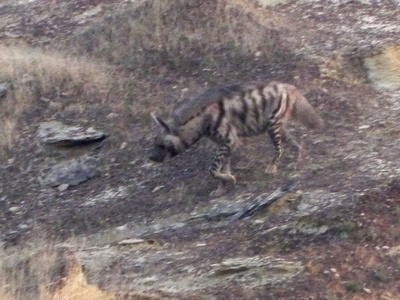
Striped Hyena
The most widespread hyena species, found in Africa, the Middle East, and Asia. It is primarily a scavenger, more solitary than its spotted cousin, and has a distinctive striped coat.
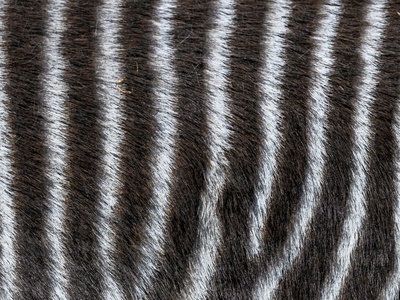
Striped Polecat
Also known as the zorilla, this African carnivore strongly resembles a skunk. When threatened, it can spray a foul-smelling liquid from its anal glands.

Striped Skunk
A well-known mammal from North America, famous for its ability to spray a powerful, noxious scent as a defense mechanism. It is highly adaptable to human presence.
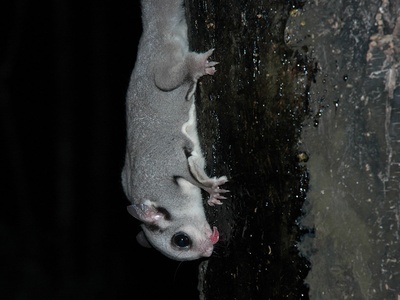
Sugar Glider
A small, nocturnal gliding possum from Australia and New Guinea. It is named for its diet of sugary nectar and sap, and its ability to glide through the air.
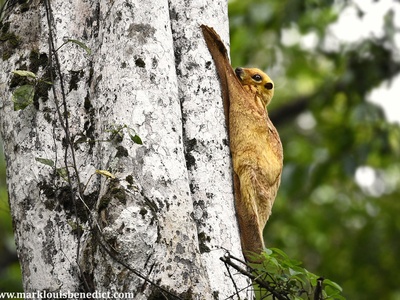
Sunda Colugo
Also known as the Sunda flying lemur, though it is not a lemur and cannot truly fly. It is a masterful glider, using a large skin membrane to travel between trees.

Sunda Clouded Leopard
A secretive medium-sized wild cat found on the islands of Borneo and Sumatra. It has the longest canine teeth relative to its body size of any living cat.
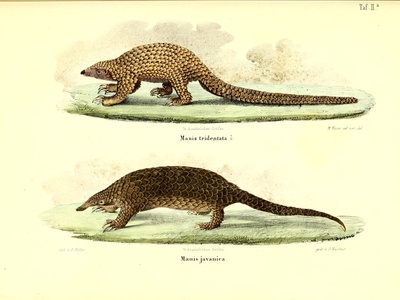
Sunda Pangolin
A critically endangered mammal covered in scales, found in Southeast Asia. When threatened, it rolls into a tight ball, and it is heavily trafficked for its scales and meat.
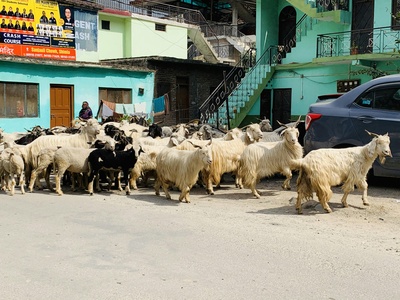
Suni
A very small antelope from southeastern Africa, standing only 30-40 cm tall. It is a shy, nocturnal browser that feeds on leaves, fungi, and fruit.

Swamp Rabbit
A large cottontail rabbit from the southern United States that is a strong swimmer. It often evades predators by diving into water and hiding with only its nose visible.

Swamp Wallaby
A common marsupial in eastern Australia. It is unique among wallabies for its dark coat and its different reproductive pattern, often conceiving a new embryo before the previous joey is born.
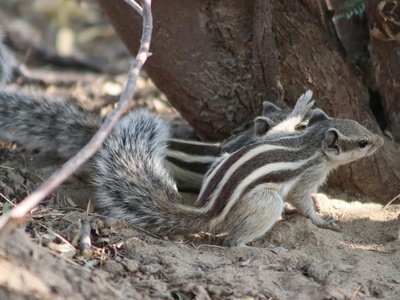
Swinhoe’s Striped Squirrel
A small, chipmunk-like squirrel found in China, Vietnam, and Myanmar. It is named for its distinct dorsal stripes and is highly active during the day.

Sword-nosed Bat
A bat from Central and South America with a remarkably long, spear-shaped noseleaf. It uses this structure to help focus its echolocation calls for hunting insects.

Sydneyside Dasyure
Also known as the Western Quoll, this carnivorous marsupial was once found across 70% of Australia but is now endangered and restricted to the southwest corner.
